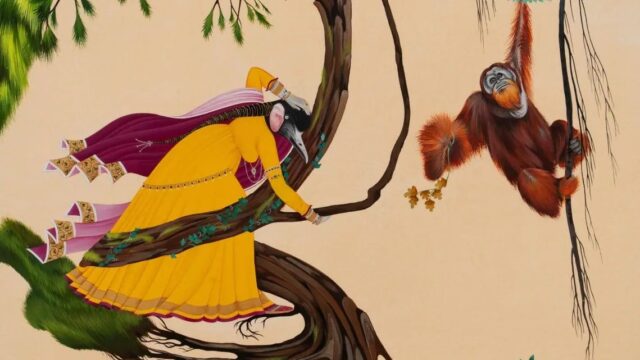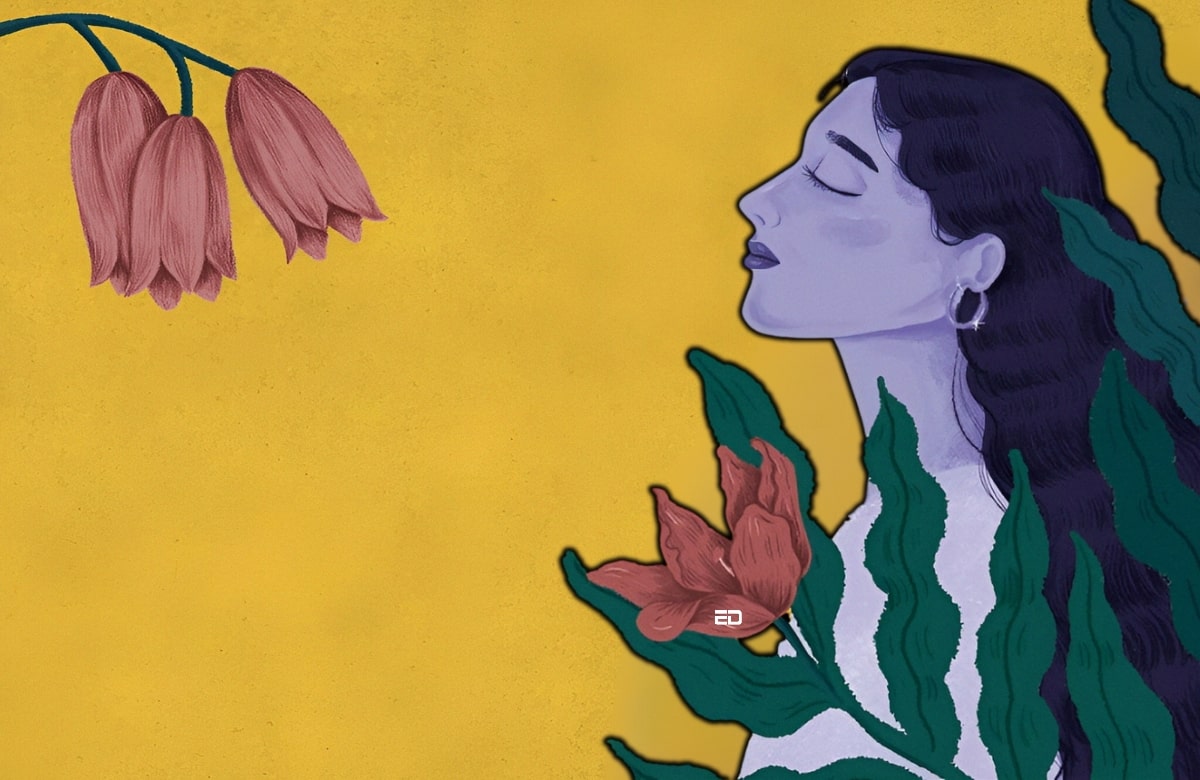Ecofeminism refers to the intersection of feminism, politics, ecology and art. The concept has become more comprehensive and popular only recently. Why? Let us explore it.
What Is Ecofeminist Art?
Ecofeminist art is not a new term, it was first coined in 1974 in a book called, ‘Le Féminisme ou la Mort’ by a French writer, Francoise d’Eaubonne.
According to the book, “Ecofeminism relates the oppression and domination of all marginalised groups (women, people of color, children, the poor) to the oppression and domination of nature (animals, land, water, air, etc.),”.
This idea has acquired greater urgency with the passing of time and drastic ecological change happenings.
A report on the website of ‘United Nations Women’ says, “The climate crisis is not ‘gender neutral”.Women and girls experience the greatest impacts of climate change, which amplifies existing gender inequalities and poses unique threats to their livelihoods, health, and safety. Across the world, women depend more on, yet have less access to, natural resources,”.
The art industry too, has been influenced by the concept of ecofeminism. There’s been a change in the way artists portray complex relationships between gender, ecology, capitalism, oppression, and others.
The scope now includes queer histories, anti-nuclear war sentiments, and privatisation of land resources.; The medium has expanded beyond the realm of painting and sculpture to include performance art and multimedia, with the body playing an integral role in the work.

Why Is Ecofeminism Getting Popular?
Although ecofeminism was introduced long ago, it is gaining much popularity now. Today, we witness extremely high temperatures and heat waves, thereby making the concept more relevant.
Moreover, various professionals and artists are promoting this idea, resulting in its popularity increasing even further. The number of exhibitions focusing on ecofeminist art has seen a sharp rise in the past two years.
Also Read: The Secret To Happier Youth Globally Lies In Surprisingly Simple DIY Solutions
For example, ‘ecofeminism (s)’ is a landmark 2020 exhibition curated by Monika Fabijanska, an art historian who specialises in women’s and feminist art at the Thomas Erben Gallery in New York. The exhibition offered a historical perspective of this genre.
“Ecofeminism is one of the richest hidden caches of contemporary art. It is art that delights the eye, provokes the mind, and can inspire change. It also restores art’s function to what it was before the Enlightenment, when both science and art were tools to understand the world and propose solutions,” stated the curatorial note.
In India too, contemporary artists such as Vibha Galhotra, Sonia Mehra Chawla, Navjot Altaf and Rohini Devasher have been indulging in political and environmental ecologies but without calling themselves as ‘ecofeminists.’
What Do The Experts Say?
Ecofeminist Sudipta Das, who is known for her figurines crafted from rice paper and Hanji paper, says, “These days, we are getting excessive rainfall during what are supposed to be dry months. Nature is disturbed. Floods arrive earlier than usual, and with greater ferocity”.
The artist has witnessed a disproportionate impact of these natural disasters on women in Silchar, her hometown. It is the women of the household who flush out the water from homes, arrange for food, and take care of the farmlands. “They end up falling ill the most during this time,” she said.
28-year-old Bhavna Kakar, the founder of Gallery Latitude, is an ecofeminist who feels that this genre of art plays, now more than ever, a central role in amplifying suppressed voices, evoking empathy, and inspiring action towards collective responsibility to nurture and protect our ecosystem for future generations.
Image Credits: Google Images
Feature image designed by Saudamini Seth
Sources: Mint, ResearchGate, The New York Times
Find the blogger: Unusha Ahmad
This post is tagged under: ecofeminism, ecofeminist, art, climate change, ecology, politics, women, gallery, New York, India, artists, inequality
Disclaimer: We do not hold any right, or copyright over any of the images used, these have been taken from Google. In case of credits or removal, the owner may kindly mail us.

































Thanks for shedding light on the increasingly popular realm of Ecofeminist Art. It’s heartening to see this intersection between environmentalism and feminism gaining recognition. One remarkable aspect of Ecofeminist Art is its ability to challenge traditional power structures and hierarchies, both in the art world and in society at large. Another notable feature is the diverse range of mediums employed by Ecofeminist artists, from traditional forms like painting and sculpture to more contemporary expressions such as performance art and multimedia installations. This versatility allows for a rich tapestry of perspectives and voices to emerge, amplifying the movement’s impact.
Overall, this post serves as a valuable introduction to Ecofeminist Art, but further exploration and analysis would enhance its depth and appeal to a wider audience. Keep up the great work in bringing attention to this important and timely intersection of art, activism and social change.